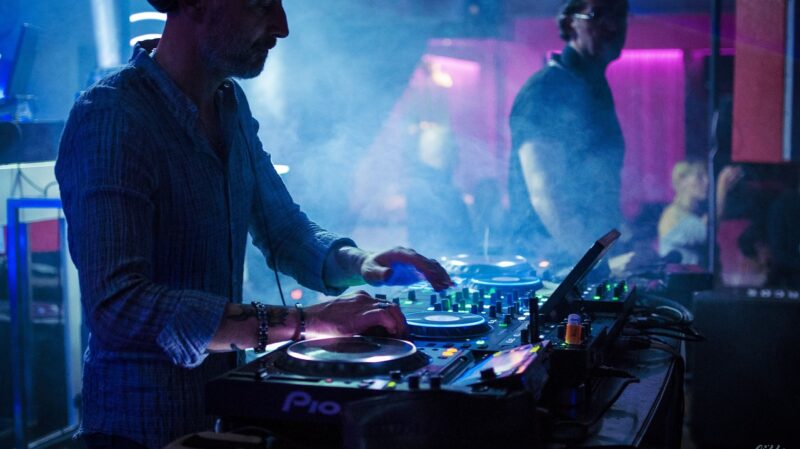The Mafia’s Role in the Golden Age of Jazz and Prohibition-Era Nightclubs
November 17, 2024

The 1920s and early 1930s in America marked a period of dramatic change, a time often dubbed the “Roaring Twenties.” This decade was characterized not only by exuberant jazz music and dynamic dance floors but also by the shadowy presence of organized crime. Integral to the fabric of the American nightlife during the Prohibition era, the Mafia’s involvement played a significant role in the evolution of jazz clubs and nightlife entertainment. To truly understand this period, we must delve into the intersections of music, crime, and culture.
1. The State of Prohibition in America
Prohibition, enacted by the 18th Amendment in 1920, made the manufacture, sale, and transportation of alcohol illegal in the United States. This ban was intended to reduce crime and corruption, enhance health, and improve morality. However, it had the opposite effect, leading to the rise of illegal speakeasies and organized crime syndicates that sought to profit from the distribution of alcohol.
With the demand for alcohol still high, the Mafia recognized a lucrative opportunity. Leaders like Al Capone in Chicago or Meyer Lansky in New York organized networks of bootleggers, bribes, and protection rackets to make sure their operations ran smoothly and profitably. The result was a nightlife scene that thrived on secrecy, danger, and excitement.
2. Nightclubs as a Hub of Social Activity
As Prohibition forced drinking underground, speakeasies emerged throughout urban America. These clubs became hotspots for the liberated social environment that characterized the Jazz Age, where music and revelry flourished. Jazz musicians such as Louis Armstrong, Duke Ellington, and Bessie Smith found themselves playing in these nightclubs, contributing to a cultural phenomenon that defined an era.
Nightclubs like the Cotton Club in Harlem and the 21 Club in New York often operated with Mafia backing. Although local law enforcement would occasionally raid speakeasies, the Mafia frequently ensured that these nightclubs had financial protection. This created a mutually beneficial relationship; club owners could cater to a large crowd with little fear of repercussions, while the Mafia profited through gambling and racketeering activities.
3. Jazz and the Mafia: An Unlikely Relationship
The connection between jazz and the Mafia is intriguing, rooted in their shared environment—both thrived on a spirit of rebellion. Jazz, often viewed as music that broke societal norms with its unconventional rhythms and improvisation, mirrored the Mafia’s defiance against Prohibition laws.
Musicians were often caught in a web of organized crime, either willingly or unwillingly. While some were protected and aided by mobsters eager to enjoy the nightlife, others found themselves coerced into performing at venues controlled by these gangs. The Mafia’s interest in jazz was twofold: they valued it for its cultural significance and utilized it to attract customers to their clubs.
4. The Rise of Fame: Icons of the Jazz Age
The joy of jazz music produced notable figures during this tumultuous time. Entertainers like Billie Holiday often found themselves entrenched in the hustle and bustle of nightclub life, with the Mafia lurking in the shadows. There were cases where musicians’ access to clubs and their pace of success hinged on the relationships they formed with mobsters. The stability offered by Mafia affiliates emboldened many artists.
Al Capone, among others, would frequent these nightclubs, lending a sense of prestige and allure. The presence of such notorious figures added an edge of danger to the nightlife experience, one that patrons craved. The glamour associated with these clubs was intertwined with the thrill of danger, making them even more popular.
5. The End of an Era: Legalization and Changing Tides
With the repeal of Prohibition in 1933, the dynamics of nightlife drastically shifted. Jazz did not fade; instead, it evolved, melding with new genres and audiences. However, the Mafia’s potent influence began to diminish as legitimate businesses took over. The new laws opened the market for legal alcohol sales and clubs, which diminished the need for organized crime’s involvement.
Yet, the legacy of the Mafia and its connection to the Golden Age of Jazz remains significant. Their influence helped shape the nightlife of an entire generation, creating an indelible mark on American culture.
6. The Lasting Legacy of Mafia-Inspired Jazz Clubs
Even today, the echoes of the Mafia’s role in jazz clubs can still be heard. The ambiance, the music, and the culture still evoke feelings of nostalgia for a bygone era. Films, literature, and popular references keep the legends alive, intertwining the romance of jazz with the mystique of organized crime.
As we look back on the Prohibition era and the ensuing Golden Age of Jazz, we realize that it was not just a time of rhythm and melodies but also one of triumph, struggle, and intrigue—one painted with both the color of music and the shadows of crime.
Conclusion
The Mafia’s role in the Golden Age of Jazz and the Prohibition-era nightclubs created a complex tapestry of culture and corruption. While the music advanced, forever changing the auditory landscape of America, the criminal underbelly thrived alongside it—intertwined, inseparable, and undeniable. As we reflect on this time, we recognize how each note played behind closed doors in darkened nightclubs helped redefine jazz, nightlife, and societal norms for generations to come.






